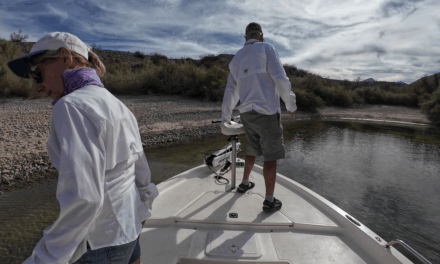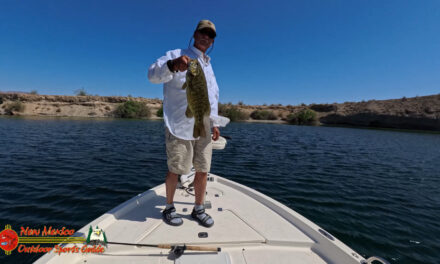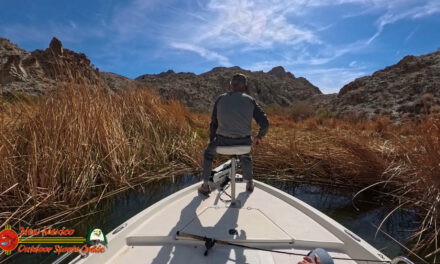Fishing Cold Weather Conditions – Lake Mohave
It’s already the time of the year to start planning your winter bass fishing tactics. Cold weather is possibly the toughest weather condition to fish in because, not only does one have extreme temperatures, but one must also contend with finicky fish.
Here are a few basic questions you may have when changing your tactics from summer to fall:
Color selection:
Most feel color is not as important as the type of lure you use. I disagree. Color has just as an important role as the lure. The color on the lakes I fish tend to be darker colors for plastics and jigs, and lighter colors for spinnerbaits and crankbaits. It is important to match your lure color and size to the baitfish of the lake you are fishing. For example: Lake Conroe’s main source of baitfish is shad approximately 2” in length. They are silver in color and tend to exhibit a blue hue. The lure that I would choose would be a ½ oz. white/chartreuse Bull Dog spinnerbait and slow-roll it around pylon docks.
Retrieval change:
Because a bass’ metabolism tends to decrease during this time, your retrieval should also decrease. This is why jigs are so productive during the cooler season. They have little action and are the big bulky bite bass are looking for to fatten up for the winter season and also for the pre-spawn season as well.
Cover:
When the front passes, the strike zone decreases and bass bury in cover. Turn to tree tops, brush piles, grass beds and docks. When fishing brush piles or tree tops, work the biggest limbs. It is important to remember that bass will bite after a front blows by, but you will have to use more finesse.
Patience is the key, but also remembering these minor changes will help improve your catching more bass.
EAT. SLEEP. FISH. SKEETER. – Lake Mohave
Read More




